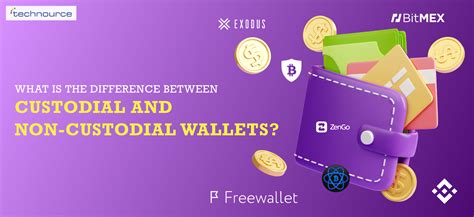Custody services of the cryptocurrency vs. Non -foster wallets: choice of the right approach
The world of cryptocurrency has exploded in recent years, with new technologies and wallets that emerge daily. As the more people join the cryptocurrency revolution, a question has become increasingly important: what approach should you adopt during the storage of the cryptocurrency? Do you prefer to outsource your digital resources to a custodian or use a non -foster wallet? The choice between these two options depends on several factors, including the level of risk tolerance, financial objectives and personal preferences. In this article, we will break down the pros and cons of each approach, helping you decide which is best for you.
What is custody service?
A custody service allows you to store your cryptocurrency in a third -party portfolio or an account controlled by an external entity, rather than maintaining full control over digital resources. This means that the custodian has access to your private keys and can manage transactions on your behalf. Examples of custody services include exchanges such as Coinbase, Binance and Kraken.
pro custody services:
- Security: Custodians generally have solid security measures to protect the cryptocurrency from hacking and theft.
- Convenience:
You don’t have to worry about managing a digital wallet or keeping track of private keys.
- Intuitive interface: Many custody services offer intuitive and intuitive interfaces for easy transactions management.
- Tax advantages: Some custodians can offer tax benefits, such as the exemption from taxes on capital gains.
against custody services:

- Loss of control: By means of a custodian, transfer control over private keys, which can be a concern if it is necessary to make changes or withdrawals.
2
- Dependence on the custodian: If something goes wrong with the custodian, it may not be able to recover the cryptocurrency.
What is the non -foster wallet?
A non -custodial portfolio allows you to store your cryptocurrency in a digital portfolio entirely under your control. This means that you have full access to your private keys and you can make changes or withdrawals without relying on an external entity. Examples of uninhabited wallets include software wallets such as Electrum, Myetherwallet (MEW) and Metamask.
pro of portfolios not foster care:
- Control: Keep complete control on the cryptocurrency and you can make changes as needed.
- The cost: Uns -foster wallets are often free or low -cost compared to custody services.
- Flexibility: You can use a non -foster wallet with any blockchain network, including Bitcoin, Ethereum and others.
Cons of wallets not foster through:
- Risks for safety: Without access to private keys, you are vulnerable to hacking, phishing and other safety risks.
- Complexity: The management of multiple wallets can be bulky, especially if you are new in the cryptocurrency.
- Limited integration: Some non -foster wallets may not integrate perfectly with third -party services or exchanges.
Which approach is right for you?
Ultimately, the choice between custody and unproven portfolios depends on your individual needs and preferences. If you:
- They are new in the cryptocurrency: non -foster wallets are often easier to use and require less technical skills.
- You need easy access to your funds: the custodians can be a better option if you want to manage transactions and withdrawals with minimum confusion.
- You prefer greater control over digital resources: uninhabited wallets offer complete control, but can behave with higher safety risks.
